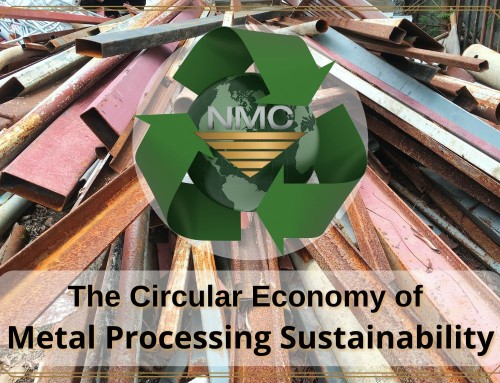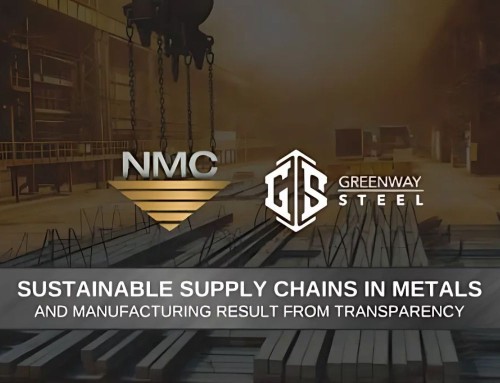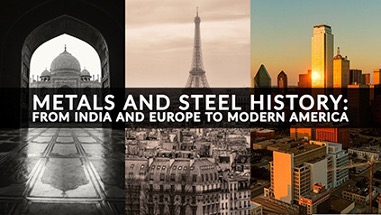
Iron, the Herald of Things to Come
Metals and steel history spans from India and Europe to modern America. For the ancients, much of life was a mystery. At first, humans only utilized the easy-to-find metals, such as gold, silver, and copper, that didn’t require human intervention to become a final product. Other available metals needed treatment before they could be used. For example, smelting was needed to extract iron from iron ore, which is a chemical compound formed from iron and oxygen. Altogether, prehistory was an age where humanity was at the mercy of the colossal powers that govern the universe.
Even still, humans progressed.
A philosopher named Aristotle perceived the essence of virtue. He theorized that virtue lies at the balance point between deficiency and excess.
“The man who shuns and fears everything and stands up to nothing becomes a coward; the man who is afraid of nothing at all but marches up to every danger becomes foolhardy.” — Aristotle
Aristotle would have recognized steel as a virtuous metal. Steel contains anywhere between 0.05% to 0.25% carbon content, the perfect balance between deficiency and excess. Too little carbon and the metal becomes weaker and soft. Too much carbon and the metal will become brittle.

But getting metal to show its virtue as steel would take technological processes that defied humans for many years. While they used bronze, many civilizations neglected iron because iron technology at the time could only produce a “low-density, sponge-like material.” The main obstacles to higher quality iron were designing furnaces with high enough temperatures and the lack of basic knowledge of elements. Eventually, however, the abundance of iron ore (more abundant than the tin needed to make bronze) made it the metal of choice. This discovery began the Iron Age. With the advent of the Iron Age, steel, an alloy of iron, now found itself in ideal circumstances to surface as the supreme metal. However, steel would have to wait until after the industrial revolution to be mass produced.
To make steel, all that’s needed is a bit of charcoal, iron, and a furnace. However, the smelting can be tricky. If “your gangue is ‘wrong’, your bellows are leaky or especially efficient, your charcoal is too reactive, […] all you produce is slag, useless cast iron, or small useless blooms.” So much mystery shrouded steelmaking, that ritual and religion often got mixed up with science. One superstitious smith in the Middle Ages insisted on “quenching the steel in ‘the urine of a redheaded boy‘.”
Humanity would eventually conquer the process over centuries. Now, we will try to follow the oftentimes obscure history of steel technology.
An Abbreviated History of Steel
Egyptians, Hittites, and the Earliest Known Steel-work
The mighty Egyptians don’t need an introduction. They are the builders of pyramids and the Sphinx, of making papyrus and hieroglyphics, appear prominently in much of the Old Testament, and are well represented in museums across the planet. However, in steel lore, Egyptian splendor pales in comparison to that of their eternal rival, the Hittites, with whom they maintained a lengthy conflict.
The Hittite empire, located in modern day Turkey, experimented heavily with metal working. Pioneers of the Iron Age, Hittites began producing steel in the second millennium B.C.E.. Scholars’ theorize that the Hittites had advanced in smelting techniques allowing them to produce advanced iron and steel metals that were more efficient than bronze weapons. However, not many steel artifacts have been found, which seems to indicate that Hittite steel production was probably very limited, if not accidental.

Egyptian carvings Image Attribution: Flicker
Despite their humble beginnings in steelmaking, it’s very possible that a displaced Hittite metallurgist fleeing from the demise of their empire helped spread steel working around the ancient world.
Sri Lanka, India, and Wootz steel (Damascus Steel)
Wootz steel, during circa 500 B.C.E., was the first truly conscientious production in which the metalworkers were aware of their actions. Previous steel, which came about as iron came into contact with charcoal next to the bloom, has been referred to as accidental and random by academics like Gordon Parr, author of Man, Metals, and Modern Magic:
“Parr acknowledges the ancients made a case-hardened steel but considers this was an accidental by-product of the charcoal next to the bloom. He considers it inappropriate to call the carbon steel alloys made at this time to be the foundation of the steel industry saying this is much like asserting ‘the baby thrashing the piano next door is making music’.”
In contrast, it is suggested by Parr that “by Alexander’s time the production of Wootz was a well-established two-step process using the crucible method. Two methods could be used, conversion from a cast iron form or conversion from a wrought iron form.”
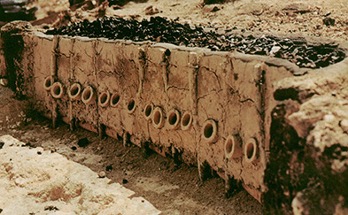
Civilizations living in and around the Indian sub-continent were the original manufacturers of Wootz steel. They would use monsoon winds to fan furnace-flames and produce steel (and cunningly lied to the Romans that it came from China as to keep the production centers from invasion). Many modern analysts doubted that natural winds could be consistent enough to fan furnace flames, but the ancients devised a way to create low-pressure zones in the furnace and thereby keep a steady stream of air in the oven.
Taking the Wootz steel, civilizations in the Near East transformed it into famous swords commonly referred to as “Damascus steel” swords.
Damascus steel swords with their distinct swirling pattern on the metalwork would become mythical. Unlike the Chalybes culture, which Greek historians mention for possessing secrets of steelmaking, Wootz steel has left behind a robust and easily identifiable mark on steel history.
It’s worth noting that around this same timeframe (500 B.C.E.), steel swords, “made by the earliest and most basic forging and folding techniques,” were being produced in China. The Chinese prowess with metalworking will be further explored later in our history of steel.
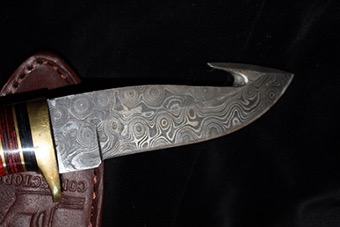
Hannibal Barca, Rome, Celts, and the Iberian Peninsula
No general in history has won as many battles as Hannibal. Widely known for his audacity in taking war elephants over the Alps, Hannibal most likely would have changed the course of history and destroyed Rome with a bit more support from Carthage.
Hannibal launched his initial attack in the second Punic War from Hispaniola. When Rome sent their generals over to conquer Hispaniola in the third century B.C.E., they encountered warriors with elite steel swords, the falcata. The steel in these swords most likely was of Celtic origin. Information about their steel making processes is obscure, although Weapon’s Universe describes the process in the following way:
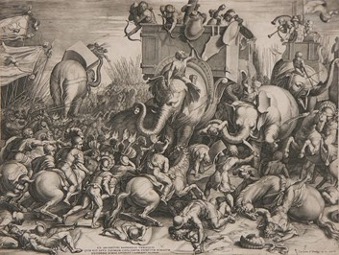
“During this possibly unique process of manufacture, various forged steel plates were buried in the ground, usually for more than three years, and allowed to corrode. They would then be dug up and any weak or spurious metal would be separated and discarded. Any remaining good steel was reforged again through the traditional Celtic method of pattern welding — the practice of forming a blade from several metal pieces of differing composition.”
How steel swords could have been buried in the ground without corroding remains a mystery beyond the scope of this blog. What’s clear is that the fearsomeness of these swords would cause a permanent change in the weapons the Romans themselves used, and eventually the Romans would conquer the Celtic kingdom of Noricum and began using Noric steel for their weapons.
Steel Production Jumps to Modernity
China had been making steel since 500 B.C.E.. However, China’s real claim to fame may be planting the seed for modern, mass produced steel. Since the 11th century, the Chinese, and maybe the Japanese as well, had a decarburization method of forging steel by repeated forging of iron under a cold blast. It has been speculated that information about these techniques had filtered into Europe and the United States by the time the Bessemer Process was created in 1856. By speedily producing steel, the Bessemer Process created a revolution:
“The Bessemer converter is a cylindrical steel pot approximately 6 meters (20 feet) high, originally lined with a siliceous refractory. Air is blown in through openings (tuyeres) near the bottom, creating oxides of silicon and manganese, which become part of the slag, and of carbon, which are carried out in the stream of air. Within a few minutes an ingot of steel can be produced, ready for the forge or rolling mill.”
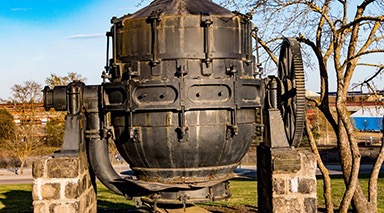
The Bessemer process finally made the global steel industry a reality, planting steel as the cornerstone of modern infrastructure. The process remained at the forefront of steel technology until Linz–Donawitz-steelmaking made it obsolete. This method differed from the Bessemer Process in two key ways:
“(1) oxygen is used rather than air and (2) instead of blowing the gas through tuyeres submerged in the bath (as in the Bessemer converter), the oxygen stream impinges on the surface of the molten iron.”
King of the Hill
Steel became an integral part of the 20th century United States, touching every part of culture from national landmarks like the Empire State Building, sports teams like the Pittsburg Steelers, superheroes like Superman, and even presidential documents naming steel as “part of the American identity.”

In the 21st century, technology continues to advance. More and more varieties of steel grades and steel alloys offer metal with very specific characteristics. The most advanced automotive, aerospace, shipbuilding, military, and infrastructure industries still rely on steel.
For example, advanced high-strength steel has become a hallmark of the modern automotive business.
The standards for steel used in cars have atomized in that automobile producers expect thousands of different properties to fit exact performance standards to the tiniest measurement. Modern cars are a collage of different grade steels, each placed in different joints and systems of the car to produce minimum waste and top performance. Through it all, steel has become lighter, stronger, and more versatile than ever.
And to think, it all started with swords and armor.
Without a doubt, as Aristotle’s king, Alexander the Great, received 30 pounds of steel as tribute from a defeated king more than 2000 years ago, he knew his army would henceforth be better armed than ever. What neither Alexander nor even his wise tutor Aristotle could ever have known was just how much virtue was truly imbued in the metal with the perfect balance of elements.
About National Material L.P.
Since 1964, National Material Limited Partnership has expanded to over 30 business divisions. The company now ranks among the largest metals companies in North America.
Please visit us at www.nationalmaterial.com or call (U.S.) 847-806-7200 to discuss how we can be of service.

